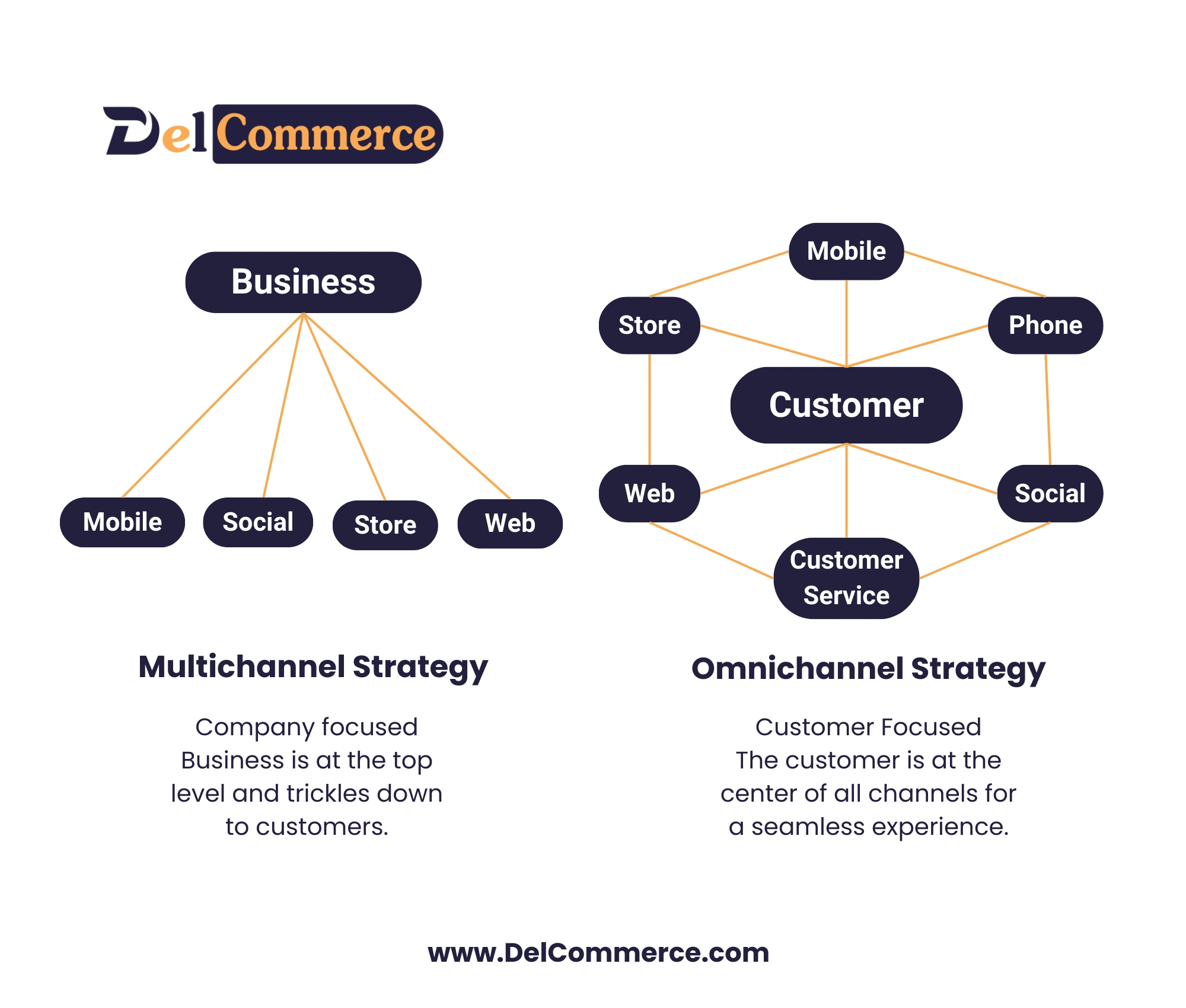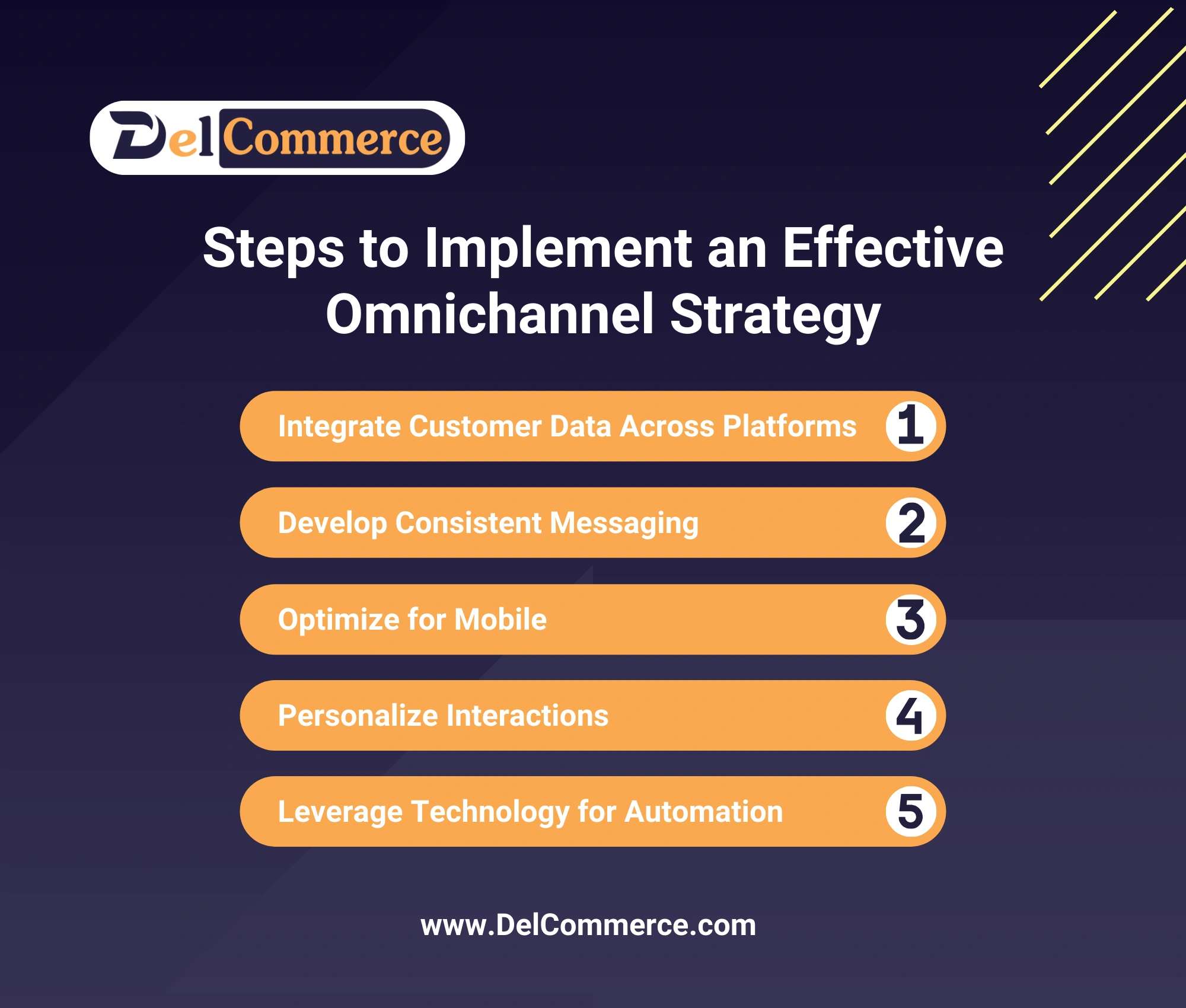In today’s highly competitive e-commerce landscape, creating a seamless customer experience is more important than ever. As customers interact with brands across various touchpoints—social media, mobile apps, physical stores, and websites—businesses must adopt omnichannel strategies to stay ahead. By unifying all these channels into a cohesive journey, companies can ensure that every interaction is smooth, personalized, and meaningful.
This article explores how omnichannel strategies enhance the customer experience and contribute to long-term business success. We’ll also provide actionable steps to implement a practical omnichannel approach and highlight how DelCommerce can help your business achieve these goals.
Understanding Seamless Customer Experience
A seamless customer experience removes friction from the customer journey and ensures that customers receive consistent and cohesive interactions across all channels. Whether a customer engages via email, browse your mobile app, or visit your brick-and-mortar store, they should receive the same level of service and feel recognized and valued at every step.
The importance of a seamless experience cannot be overstated—research shows that 73% of consumers use multiple channels during their shopping journey, and businesses that prioritize this type of experience retain 89% of their customers.
What Are Omnichannel Strategies?
Omnichannel strategies are designed to connect all customer touchpoints to create a unified brand experience. This means integrating physical stores with digital channels such as social media, websites, mobile apps, customer support, and email marketing.
Unlike multichannel strategies, which often operate in silos, omnichannel strategies emphasize a holistic approach where each channel complements the other. An omnichannel strategy can increase customer loyalty, improve engagement, and drive higher conversion rates when implemented correctly.

Key Benefits of Omnichannel Strategies
1. Enhanced Customer Satisfaction
Omnichannel strategies facilitate a seamless customer experience, leading to greater customer satisfaction. Customers can switch between different platforms without losing their place in the purchasing process or receiving disjointed messages. For instance, a customer might start researching products on a mobile app, continue browsing on a laptop, and then finalize their purchase in-store—all while retaining a cohesive experience.
2. Improved Brand Recognition and Loyalty
Consistency across all channels helps build a stronger brand identity. Customers who receive uniform messaging, personalized offers, and a smooth journey are more likely to associate these positive attributes with the brand. This builds trust and fosters loyalty, encouraging repeat purchases and referrals.
3. Data-Driven Personalization
Omnichannel strategies enable businesses to collect data from multiple sources, offering more profound insights into customer behavior. By analyzing this data, companies can deliver personalized recommendations, targeted promotions, and optimized content based on individual preferences, further enhancing the seamless customer experience.
4. Increased Conversion Rates and Sales
Connecting all channels into a unified strategy can boost sales by providing customers with a convenient and flexible shopping experience. A seamless transition between online and offline channels reduces the likelihood of abandoned carts and missed opportunities, translating into higher conversion rates and revenue growth.
5. Streamlined Communication and Support
Omnichannel strategies also benefit internal operations, particularly in communication and support. With all interactions tracked and integrated, support teams can access complete customer histories and provide more efficient assistance, resulting in faster resolutions and happier customers.
Implementing an Effective Omnichannel Strategy
1. Integrate Customer Data Across Platforms
To create a seamless customer experience, businesses must unify customer data from all touchpoints. This means linking data from websites, social media, in-store purchases, and mobile apps into a single customer profile. Utilizing CRM (Customer Relationship Management) systems or CDPs (Customer Data Platforms) can facilitate this integration, making delivering personalized content and offers easier.
2. Develop Consistent Messaging and Branding
Brand messaging should remain consistent across all channels. This ensures that customers receive uniform information, whether reading an email, browsing a website, or talking to a sales associate in a store. Consistency in tone, style, and information builds trust and recognition, key components of a strong brand identity.
3. Optimize for Mobile
With mobile devices accounting for more than half of all internet traffic, optimizing for mobile is crucial. Ensure that your website, emails, and digital content are mobile-responsive. Mobile optimization is not just about layout but also involves offering mobile-specific features such as click-to-call buttons, easy navigation, and fast-loading pages.
4. Personalize Customer Interactions
Utilize customer data to personalize every interaction. This can range from showing personalized product recommendations on a website to sending tailored promotions via email based on past purchases. Personalization makes customers feel valued and understood, a critical factor in providing a seamless customer experience.
5. Leverage Technology for Automation and Integration
Technology plays a crucial role in executing omnichannel strategies. Implementing automation tools can streamline email marketing, social media posting, and customer support. Similarly, integrating platforms like inventory management systems, POS systems, and CRMs ensures that data flows seamlessly across all channels.
Best Practices for Measuring Success
1. Monitor Customer Feedback and Behavior
Collect customer feedback regularly to understand pain points and areas for improvement. Analyzing customer behavior—such as time spent on a website, click-through rates, and bounce rates—can also provide insights into the effectiveness of your omnichannel strategy.
2. Track Key Performance Indicators (KPIs)
Identify KPIs aligned with your business goals, such as customer satisfaction scores, Net Promoter Scores (NPS), and retention rates. These metrics will help you measure the impact of your omnichannel efforts and make data-driven decisions for continuous improvement.
3. Test and Optimize
Implementing omnichannel strategies is not a one-time event. Continuously test different aspects, such as promotional offers, personalized content, and new technologies. Use A/B testing to compare strategies and determine the best for your audience.
Conclusion: Achieving a Seamless Customer Experience with DelCommerce
Creating a seamless customer experience through omnichannel strategies is no longer optional—it’s a necessity. Businesses prioritizing integrating all their channels and delivering a cohesive journey stand to gain higher customer satisfaction, loyalty, and revenue.
Ready to elevate your business? At DelCommerce, we specialize in helping businesses implement effective omnichannel strategies tailored to their unique needs. Contact us today to learn how we can help you create a seamless customer experience that drives growth and success.





Comments (2)
Everything is very open and very clear explanation of issues. was truly information. Your website is very useful. Thanks for sharing.
Magnificent goods from you, man. I have understand your stuff previous to and you’re just extremely great. I actually like what you’ve acquired here, certainly like what you are stating and the way in which you say it. You make it entertaining and you still take care of to keep it sensible. I can’t wait to read far more from you. This is actually a wonderful site.